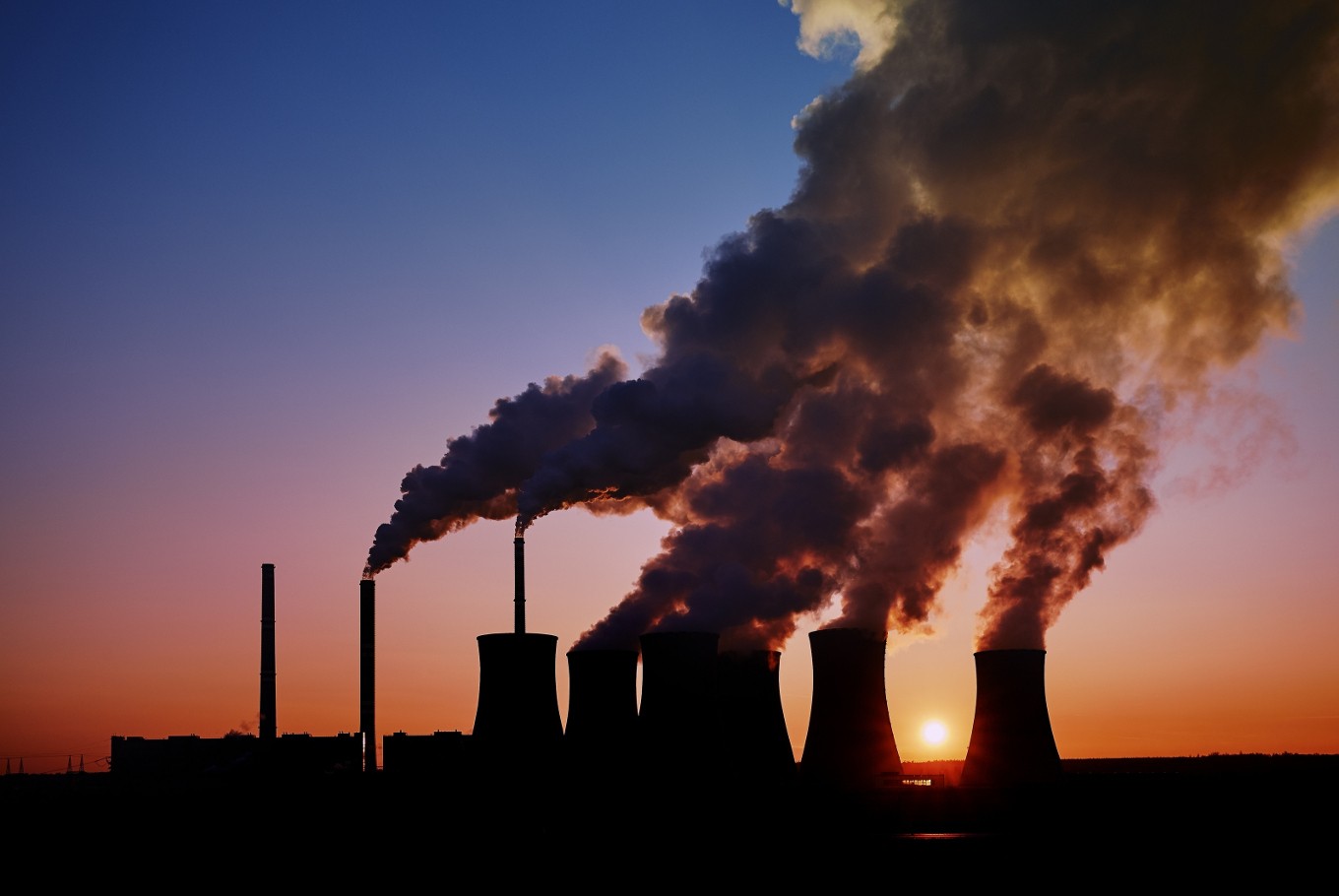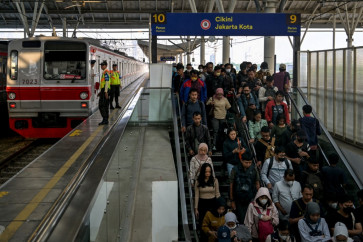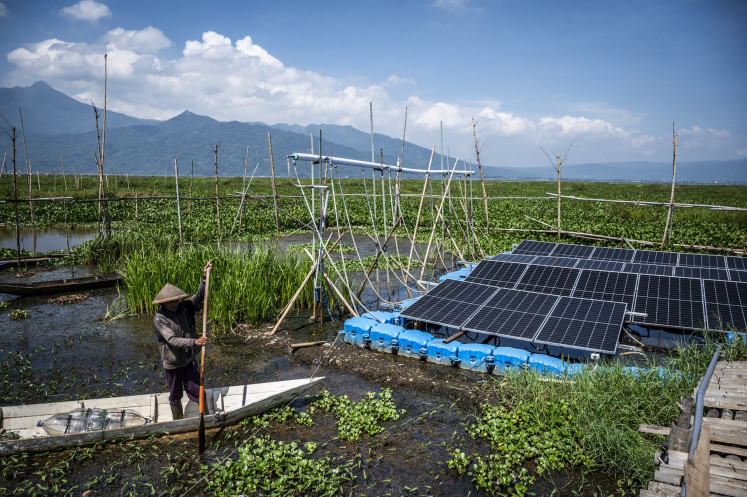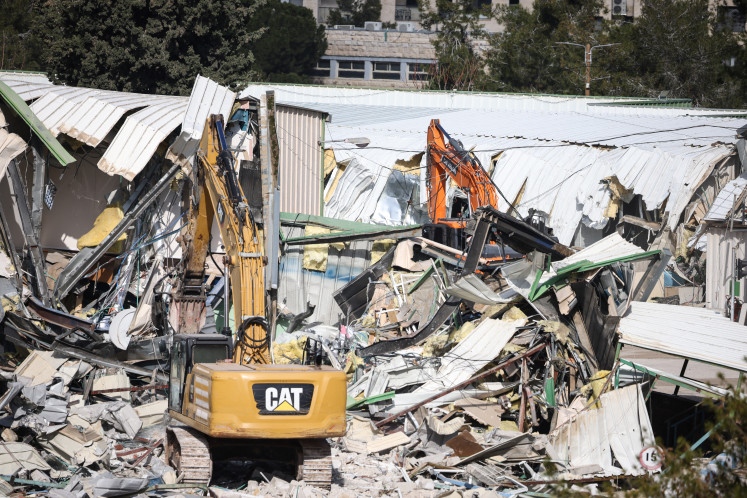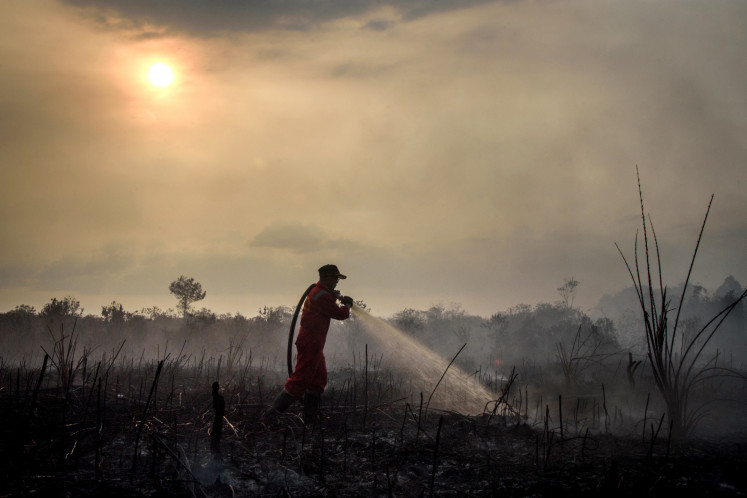Popular Reads
Top Results
Can't find what you're looking for?
View all search resultsPopular Reads
Top Results
Can't find what you're looking for?
View all search resultsCorruption allows mine-mouth coal plants to pollute
Coal power plant corruption has the potential to compromise on the quality of air pollution control.
Change text size
Gift Premium Articles
to Anyone
T
he corruption associated with coal power plant projects re-emerged after the arrest of Eni Saragih, the deputy leader of House of Representatives’ Commission VII which oversees energy and mineral resources, and Johannes B Kotjo, a senior executive of the company that owned coal-fired steam power plant (PLTU) Riau 1. In our Association of Ecological Action and People’s Emancipation (PAEER), based on media online tracking, we note at least 18 power plants associated with corruption, occurring in various stages, ranging from licensing and land acquisition to the procurement of technology.
Coal power plant corruption has the potential to compromise on the quality of air pollution control. A coal-fired power plant is a type of plant that generates the greatest air pollution among power generators. As a result, citizens’ criticisms of air pollution from coal power plants take place in both developing and developed countries such as Bangladesh, India, China, the United States and Germany. Also included are some places in Indonesia. Residents in Ombilin, West Sumatra; Tanjung Kasam, Batam; Indramayu, West Java; Cilacap, Central Java; Pacitan, East Java and Holtekamp, Papua, complained about air pollution caused by coal-fired power plants.
Pollution from coal power plants can be reduced by applying the best available pollution control technology and stricter regulations. Many owners think that the application of air pollution control technology is quite expensive, reaching 25 percent of the total cost of the construction of a power plant. This investment could potentially be reduced with corruption to compromise on pollution control standards.
Indonesia’s air pollution standards on coal-fired power plants are lower than many other countries. Compared to China, India and Japan, coal power plant emission standards in Indonesia are seven times more loose (Center for Science and Environment, 2016). The Environment and Forestry Ministry does not adhere to the process of tightening air emission standards despite being urged to do so by environmental organizations supported by impacted communities.
The price of coal-fired electricity has always been cheap compared to electricity from other sources because the prices listed in the power purchase agreement do not include health and environmental impact costs incurred. Based on research of 29 coal-fired power plants conducted by Thomas Sundqvist in 2002, the cost of coal power plant externalities averaged 29 US cents per kilowatt (KW) (Rp 2,557, based on 2002’s exchange rate).
This figure in itself is higher than the price of electricity generated by coal-fired power plants, ranging from 2.48 to 5.64 US cents per KW in 19 countries from 2005 to 2010. Compared to electricity prices in Indonesia, since March this year, the average cost of electricity generated by state-owned electricity company PLN is 7.6 US cents per KW (Rp 1,025 per KW). Thus people living near coal-fired power plants have suffered in terms of health and environmental conditions without being compensated by coal power plant owners.
The government program to shift from coastal to mine-mouth coal power plants (located within 20 kilometers of the mine site) adds to potential environmental injustice. Communities around the mine are generally rural, have less access to information on health problems caused by coal burning and are often evicted from their land in the name of infrastructure.
In a study in the US, the number of African-American communities, two-thirds of whom live within 48 km of a power plant, who had been taken to hospital for asthma attacks was four times higher than the national average and three times more had to stay in hospital because of asthma (Air of Injustice: African-Americans and Power Plant Pollution, 2002).
Mine-mouth power plants, such as PLTU Riau 1, are using low-calorie coal of the lignite type. Using low-calorie coal means burning more coal to generate the same amount of electricity. More air pollution from burning coal will thus occur. The development of 6,045 megawatts of mine-mouth power plants based on the 2018 PLN working program will potentially create pollution in rural areas.
Mines that provide coal to mine-mouth power plants generally lack transportation infrastructure that allows the coal to be transported to the market on a large scale and they are basically not commercially viable. But there has been strong lobbying to include such low-quality coal in PLN power generation.The role of the Corruption Eradication Commission (KPK) is crucial to rescue residents in the areas around mine-mouth power plants, which do not use adequate pollution control technology due to corruption.
***
The writer is the coordinator of Perkumpulan Aksi Ekologi dan Emansipasi Rakyat (Association of Ecological Action and People’s Emancipation), an environmental NGO.

